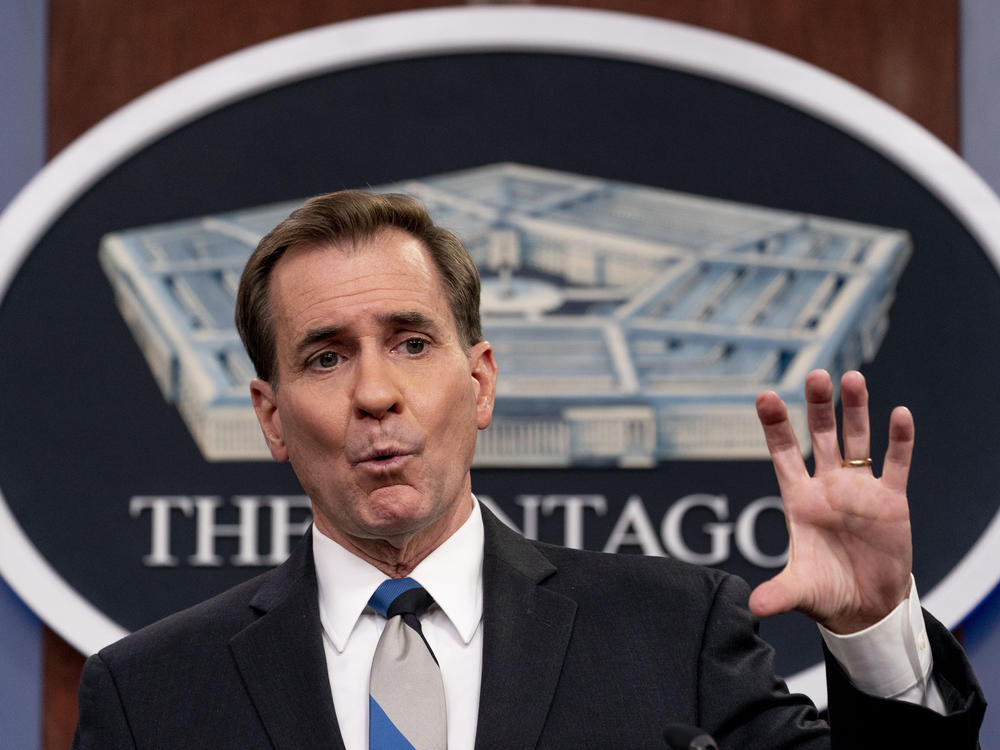Section Branding
Header Content
No U.S. troops behind a drone strike that killed Afghan civilians will be punished
Primary Content
The Pentagon said it would not punish the military team behind the errant drone strike that was intended to hit the masterminds of an attack on the Kabul airport but instead killed 10 civilians, including seven children.
Defense Department spokesperson John Kirby on Monday confirmed reports that Defense Secretary Lloyd Austin III approved a series of recommendations following an investigation into the deadly incident in August. Those did not include disciplinary action for the military service members involved in what officials have called a "tragic mistake."
"The secretary's not approving or calling for additional accountability measures," Kirby told reporters during a briefing.
"I do not anticipate there being issues of personal accountability to be had with respect to the August 29th airstrike," he added.
Investigations led by Gen. Kenneth F. McKenzie Jr., who leads U.S. Central Command, and Gen. Richard D. Clarke, the head of the Special Operations Command, resulted in a series of recommendations for procedural changes and process improvements "that need to occur and will occur," Kirby said. "But in this particular case," he explained, "there was not a strong enough case to be made for personal accountability" and no one was found criminally negligent.
An investigation by the Air Force's inspector general, Lt. Gen. Sami D. Said, found the deadly mistake was the result of "confirmation bias." Military officials were looking for a white Toyota Corolla, and when such a vehicle showed up at a suspected Islamic State location, they believed it contained a bomb. Instead, it was an aid worker loading his car with a lap top computer. The Pentagon is working to provide condolence payments and bring surviving family members to the U.S.
How the strike went wrong
The counterterror strike in Afghanistan came in the final days of the chaotic U.S. and NATO pullout from the country.
The Pentagon initially claimed the counterterror strike had killed an Islamic extremist who was plotting an imminent attack. It was just days after 13 U.S. service members were killed outside of the Kabul airport by suicide bomber. At the time, officials said, intelligence information indicated a white Toyota was carrying a car bomb. Officials surveilled the car and its driver as he made several suspicious stops near the airport, placing what looked like gas canisters in the car. In all, they watched for approximately eight hours before striking it with a 20-pound Hellfire missile from a drone.
But, the man in the car was not an extremist terrorist. He was Zemari Ahmadi, an aid worker with a group called Nutrition and Education International, who had been transporting water. The explosion of the car, parked in a courtyard of a home, killed Ahmadi, as well as seven children and two other adults.
But before any of those details were uncovered, Gen. Mark Milley justified the bombing, saying, "the procedures were correctly followed and it was a righteous strike."
Pentagon admits mistake after news reports show a very different narrative
It wasn't until The New York Times uncovered video footage that challenged the Pentagon's narrative that officials admitted the strike had been a mistake.
"What we saw here was a breakdown in process and execution and procedural events. Not the result of negligence, not the result of misconduct, not the result of poor leadership," Kirby said Monday.
The decision should not be interpreted as a sign that the department is "turning a blind eye," to the killing of civilians, Kirby expanded. "It's just that you have to look at [the counterterrorism strike] in time and space."
He added: "You have to look at this particular strike and not draw broader, wider conclusions about accountability and high standards of conduct based on this one outcome."
Copyright 2021 NPR. To see more, visit https://www.npr.org.

